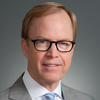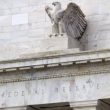The year ahead may be noteworthy for being more “normal”–still growing, just slower.
by Jurrien Timmer, Director of Global Macro, Fidelity Investments
Key takeaways
- Stocks are poised to deliver positive returns in 2022, but likely not as much as they did in 2021, as earnings growth slows and the Fed tightens.
- Attempts by the Federal Reserve to tighten monetary policy could potentially affect real rates, with impact on the markets and the economy.
- Growth stocks could continue to outperform value if interest rates stay low. They have been leading the market since 2014.
- I expect that the secular bull market that began in 2009 will continue, driven by demographics, low rates, and strong cash flows from the "big growers."
Since the brief-but-sharp 35% decline almost 2 years ago, US stocks have risen to record highs, thanks in part to the timely and massive fiscal and monetary policy response to COVID-19 and the resulting lockdowns. Now as 2022 begins, I expect the markets to mean-revert back to trend-like growth, and for the Fed to take the first steps on the road back to a neutral monetary policy.
Mid-cycle stocks
Most economic indicators suggest that the US remains in the mid-cycle phase of the business cycle, following the early recovery from the pandemic in the second quarter of 2021. There are hints of late cycle but they are coming mostly from the tight labor market. For 2022, I expect that stocks will perform much as they have in previous mature mid-cycle expansions by continuing to advance, but not as much as they did earlier in the cycle when the economy was just emerging from the COVID recession.
The reason for slower growth in stock prices is 2-fold. First, earnings growth is likely peaking now, at the same time that the Fed starts removing liquidity from the system. Earnings growth in 2021 was 45%. In 2022, earnings are expected to continue growing, but at a slower pace with consensus estimates at 8%. During the earlier part of the recovery, stock valuations rose sharply, simply because price often bottoms before earnings. Since then, earnings have done the heavy lifting for this bull market. But like seasons in the year, we are now entering that phase of the cycle where earnings growth slows to a more trend-like pace. That's still a positive for stocks, especially against the backdrop of low interest rates, but it's hard to imagine a repeat of the past 12 months.
The Fed, growth, and inflation
Just as it has for the past several years, the Fed will continue to play a big role in 2022, but for somewhat different reasons. After taking extraordinary measures to stimulate the recovery, the Fed is now looking to step back and end—or "taper" in Fed-speak—its bond purchases in anticipation of raising interest rates back to what it considers a neutral policy (2.5%).
The Fed needs to start normalizing policy because its dual mandate of full employment and 2% average inflation has now either been met or exceeded. As 2022 begins, unemployment has fallen back to where it was before the pandemic (and near what the Fed considers full employment), while inflation is well above 2%. Therefore, there is no longer any justification for the Fed to keep rates at 0% and buy $120 billion worth of bonds each month. If anything, in retrospect the Fed probably should have started normalizing policy sooner.
But given how big a role the Fed has played in adding liquidity to the markets, stepping back may not be as simple as it sounds. The market's current wobble is evidence of that. I think we will see more of that in 2022 (corrections within a bull market), as the market and the Fed do their dance between market expectations and Fed policy. Sometimes the dance is like an Italian tarantella with light, quick steps, and lots of flirting between the 2 partners, like when the Fed raised rates many times from 2004 to 2007 and the market didn't miss a step. Other times, the dance is more like punk rock slam dancing. In 2015, the Fed raised interest rates for the first time since the financial crisis and there was an immediate backlash from the market.
This time, there are a lot of different ways the dance could play out. My sense is that the Fed has some good will from the markets, which have accepted that the Fed will taper its asset purchases more quickly than had been expected. The Fed really has the next couple of quarters to figure out how often and how high to raise rates. It's very plausible that by the time it needs to make a decision, the inflation fever may have broken.
In my view, 6% or 7% inflation is not going to persist. There's a school of thought that inflation is currently high because a lot of companies double-ordered inventory during the last few months because of supply chain bottlenecks. That has made those bottlenecks worse, but if economic activity slows, companies may end up with excess inventory and inflation could slow. If that happens, the Fed could stay with its original plan to gradually raise rates over a few years, rather than being forced into tightening faster than the markets can withstand.
What to invest in for 2022?
While 2022 will likely be a positive year for stocks overall, it's less clear how various types of stocks may perform. In 2021, growth stocks and value stocks took turns outperforming each other and that could continue in 2022. If interest rates stay low in 2022, growth stocks could well continue to dominate because value tends to be more of a play on inflation. Should we have both?
Interest rates matter a lot for how this will play out. For investors there's not much reason anymore to buy bonds for their yield (nominal or real), other than for their diversification benefits. The diversification effect or ability of bonds to protect against drawdowns in stocks remains proven.
Riding a secular bull?
As 2022 begins, I believe we're still in the secular bull market we have been in since 2009. Everything that the market has done since that point has been consistent with how secular bull markets behave. The recovery has been fast and furious and the market continues to behave like a secular bull market. If it continues to follow the pattern of past secular bull markets, the S&P 500 could reach 8,000 in the next 5 years. 21 months ago that may have seemed pretty outlandish, but it's been following the historical analog of previous secular bull markets very consistently. The further it continues to do that, the less outlandish that 8,000 is going to look.
About the expert

Jurrien Timmer is the director of global macro in Fidelity's Global Asset Allocation Division, specializing in global macro strategy and active asset allocation. He joined Fidelity in 1995 as a technical research analyst.














